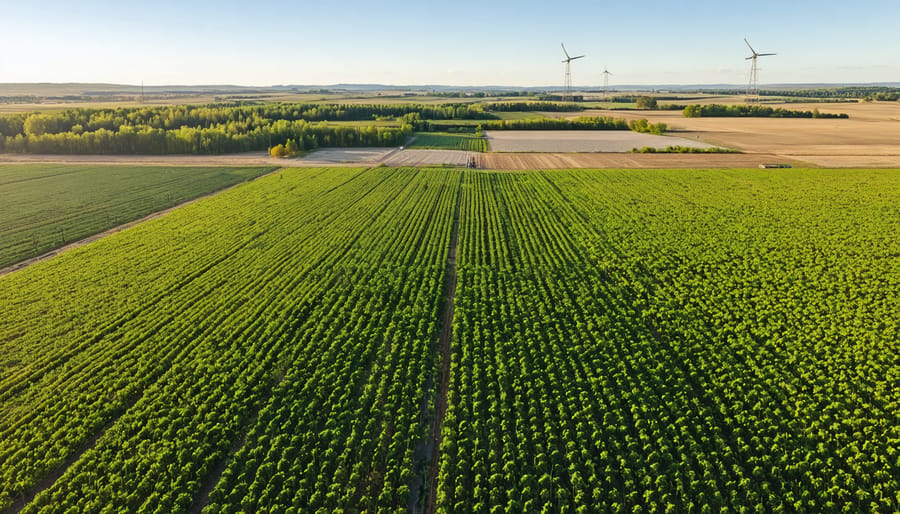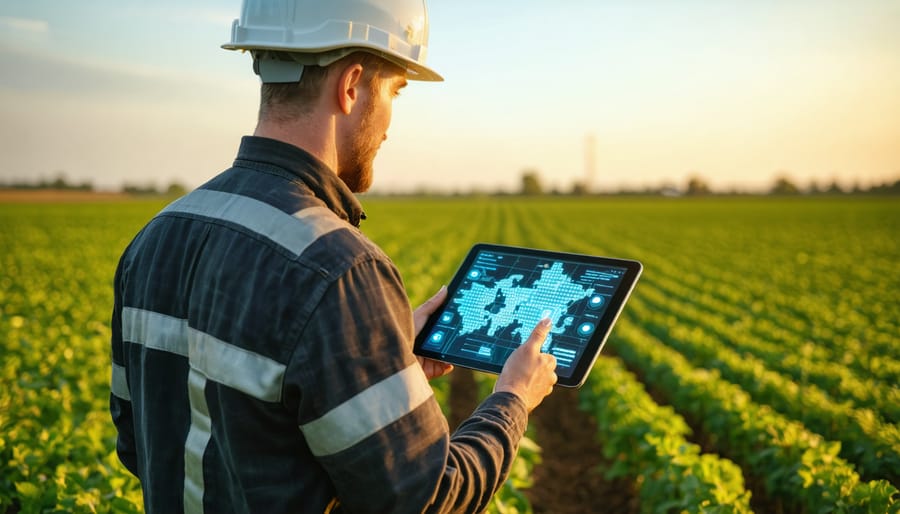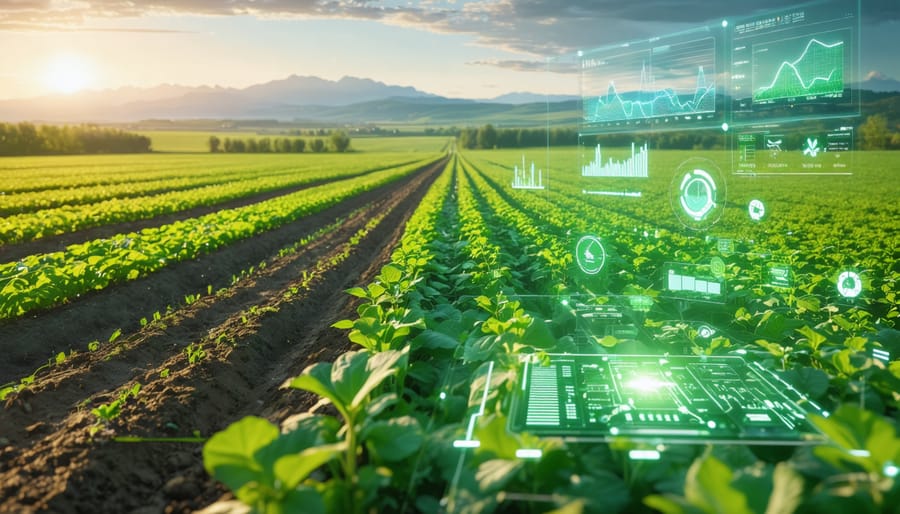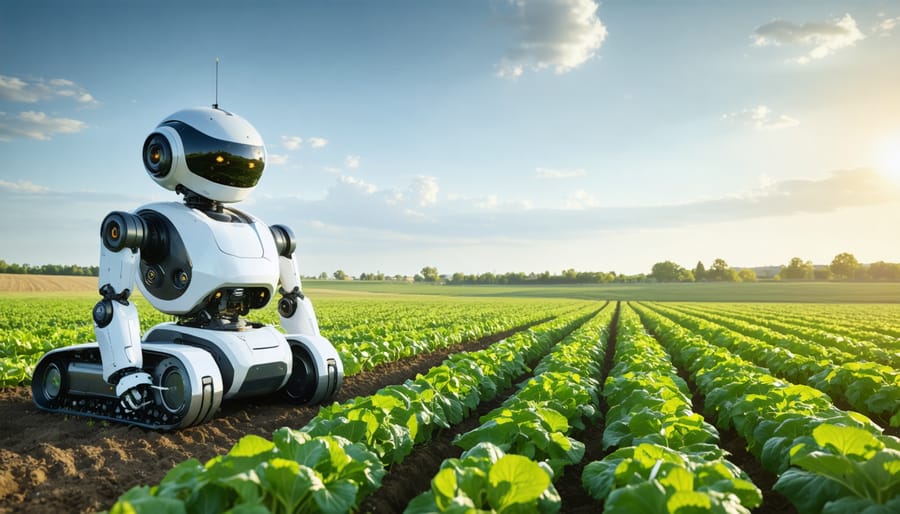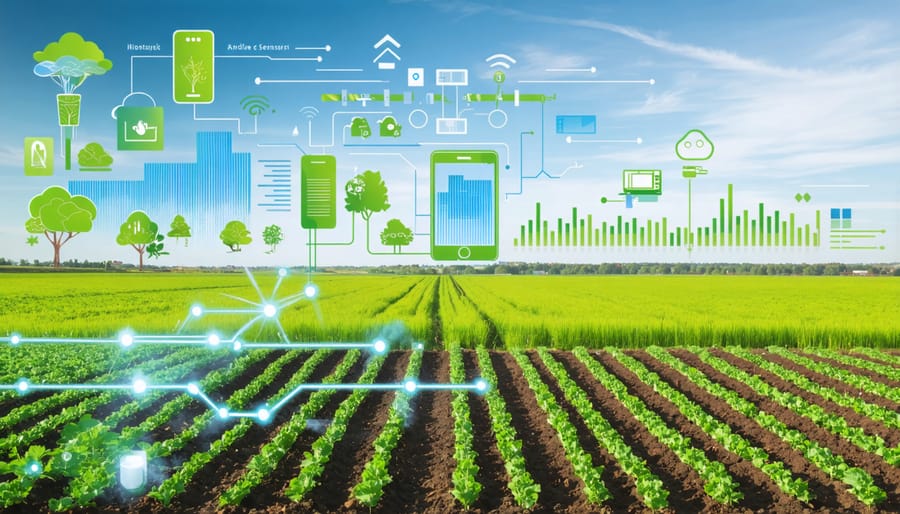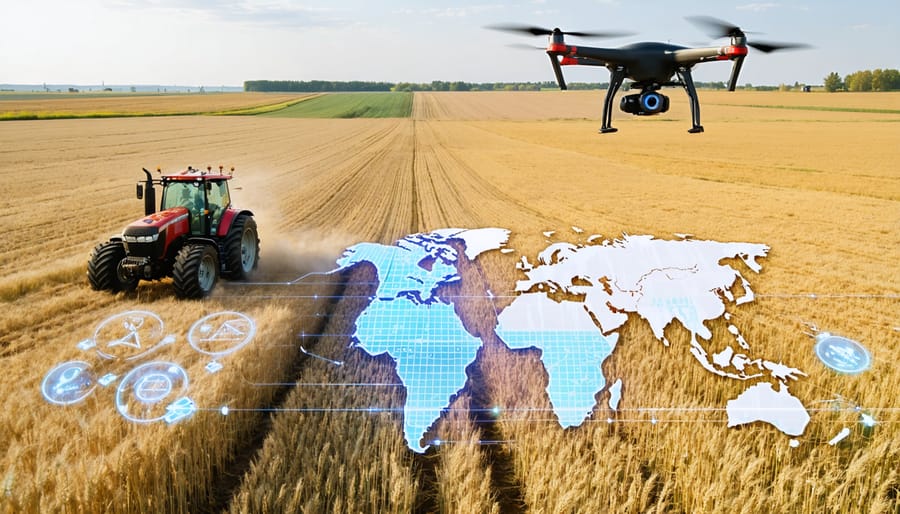5G connectivity is revolutionizing organic farming across Alberta’s agricultural landscape, transforming how we monitor, manage, and optimize crop production. This next-generation wireless technology enables real-time data transmission from thousands of field sensors, delivering precise insights about soil conditions, crop health, and weather patterns directly to farmers’ smartphones. With speeds up to 100 times faster than 4G and near-zero latency, 5G networks support advanced applications like autonomous tractors, drone-based crop monitoring, and AI-powered irrigation systems that were previously impossible in remote farming regions.
For Alberta’s organic farmers, this technological leap means more efficient resource management, reduced operational costs, and improved crop yields while maintaining strict organic certification standards. The integration of 5G-enabled smart farming solutions helps bridge the gap between traditional organic practices and modern precision agriculture, ensuring sustainability remains at the forefront of innovation. As we witness this digital transformation in agriculture, 5G connectivity stands as the backbone of a more resilient, data-driven organic farming future.
Why 5G Matters for Your Organic Farm
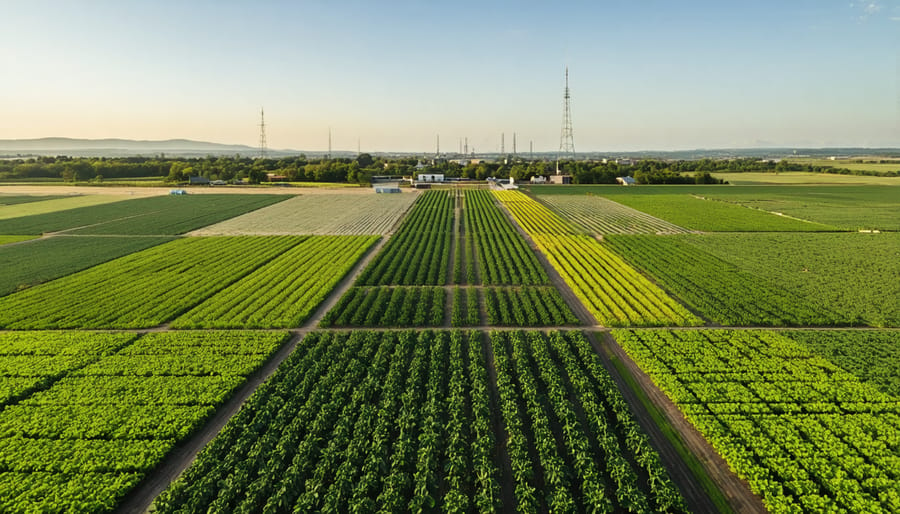
Beyond Speed: Real-Time Decision Making
In modern farming, split-second decisions can mean the difference between optimal harvest timing and missed opportunities. 5G’s remarkable low latency – as quick as 1 millisecond – transforms how we process and act on farm data. Here in Alberta, where weather patterns can shift rapidly, this instant response capability is particularly valuable.
Consider a network of soil moisture sensors across your field. With 5G, these sensors can communicate readings to your central system almost instantaneously, allowing for real-time irrigation adjustments. When a sudden frost warning comes in, automated greenhouse systems can respond immediately, protecting sensitive crops without waiting for manual intervention.
Local farmer Sarah McKenzie from Lethbridge shares, “Before 5G, there was always a delay between getting sensor readings and adjusting our irrigation. Now, our systems respond almost immediately to changing conditions, helping us save water and protect our crops more effectively.”
This rapid processing also enables quick responses to pest detection, equipment maintenance alerts, and optimal harvesting conditions. For organic farmers, this means better timing for natural pest control methods and more precise application of approved treatments, maximizing their effectiveness while maintaining organic standards.
Connecting Your Entire Operation
With 5G connectivity, your farm becomes a seamlessly integrated digital ecosystem. From the comfort of your office or through your mobile device, you can monitor and manage every aspect of your operation in real-time. Soil moisture sensors in your fields, weather stations, and automated irrigation systems all communicate instantaneously, providing you with comprehensive data to make informed decisions.
Here in Alberta, farmers are using 5G networks to connect multiple farm locations, equipment, and monitoring systems. For instance, at the Henderson Family Farm near Lethbridge, their integrated system allows them to monitor six separate field locations, two grain storage facilities, and their livestock operations simultaneously through a single dashboard.
The high bandwidth and low latency of 5G means you can receive HD video feeds from drone surveys, access detailed soil analysis data, and control autonomous equipment without delay. This level of connectivity enables predictive maintenance on machinery, automated climate control in greenhouses, and precise resource management across your entire operation.
For organic farmers, this comprehensive monitoring is particularly valuable, as it helps maintain certification requirements through detailed record-keeping and ensures compliance with organic standards while optimizing resource use.
Practical Applications in Alberta’s Organic Farms
Precision Irrigation Systems
In the heart of Alberta’s farmland, precision irrigation systems powered by 5G connectivity are revolutionizing water management practices. These advanced systems combine real-time soil moisture sensors, weather data, and crop-specific algorithms to deliver exactly the right amount of water when and where it’s needed.
Local farmer Sarah Thompson from Lethbridge County reports a 30% reduction in water usage since implementing 5G-enabled irrigation on her 400-hectare operation. “The system alerts me instantly when soil moisture levels drop below optimal levels, and I can adjust irrigation schedules right from my phone,” she explains.
5G’s ultra-low latency enables thousands of soil sensors to communicate simultaneously, creating a detailed moisture map across entire fields. This precise data helps farmers maintain optimal growing conditions while conserving our precious water resources. The high-speed network can process this information in milliseconds, allowing for immediate adjustments to irrigation schedules based on changing weather conditions or crop needs.
The technology is particularly valuable during Alberta’s unpredictable summer months, when efficient water management becomes crucial. Smart irrigation systems can automatically shut off during rainfall events and adjust water distribution based on slope, soil type, and crop requirements. This level of precision not only conserves water but also helps prevent issues like soil erosion and nutrient leaching.
For organic farmers, these systems provide additional benefits by maintaining consistent soil moisture levels, which supports beneficial microorganism activity and natural nutrient cycling.
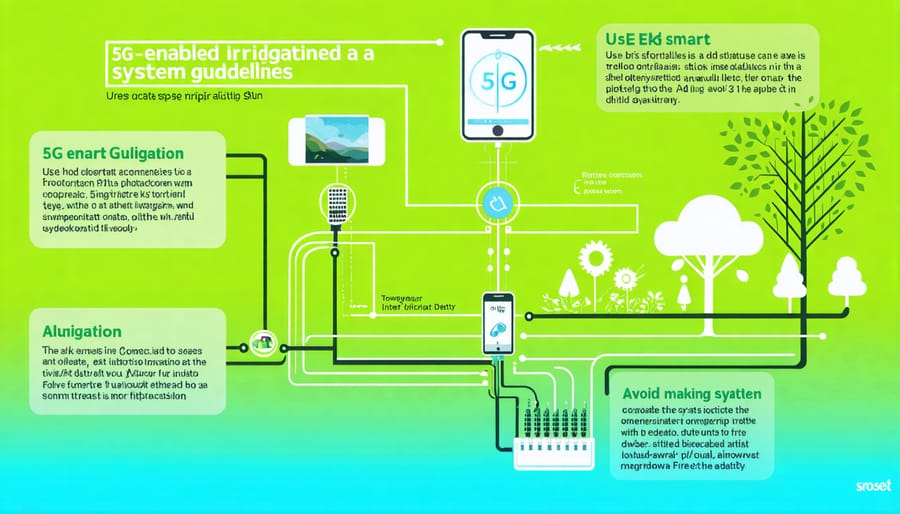
Soil Health Monitoring
In the heart of Alberta’s farming communities, 5G connectivity is revolutionizing how we understand and manage soil health. Through advanced smart soil monitoring systems, farmers can now access real-time data about their soil’s composition, moisture levels, and organic matter content.
These systems utilize an interconnected network of sensors that transmit data through high-speed 5G networks, providing instant insights into soil conditions. For organic farmers, this technology is particularly valuable as it helps maintain optimal soil health without synthetic inputs. The sensors can detect subtle changes in soil chemistry, biological activity, and physical structure, enabling quick responses to emerging issues.
Local farmer Sarah Thompson from Red Deer County shares, “With 5G-enabled sensors, I can monitor multiple field conditions simultaneously. The real-time alerts help me make timely decisions about irrigation and organic matter management, especially during our unpredictable prairie weather.”
The technology also supports precision farming practices by creating detailed soil health maps. These maps help farmers identify areas requiring additional attention or organic amendments. The high bandwidth of 5G networks allows for continuous data streaming, enabling farmers to track soil health trends over time and make data-driven decisions about crop rotation and organic matter application.
By integrating this technology, Alberta’s farmers are leading the way in sustainable soil management while maintaining the principles of organic farming.
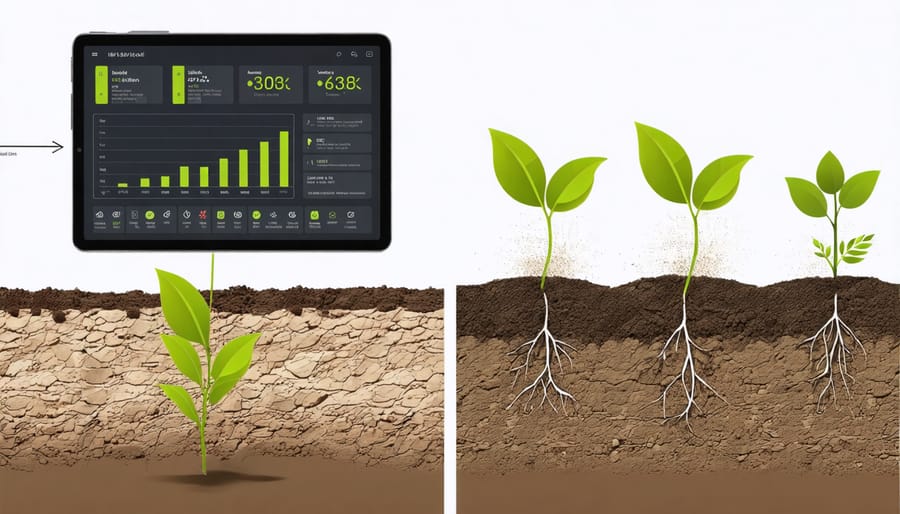
Pest Management Without Chemicals
The integration of 5G technology with precision agriculture has revolutionized how Canadian farmers approach pest management without relying on chemical interventions. By deploying smart sensors throughout fields, farmers can now detect pest infestations before they become severe, allowing for timely implementation of natural pest control methods that protect both crops and soil health.
These advanced sensor networks, operating on ultra-fast 5G connections, monitor crucial environmental factors such as temperature, humidity, and pest populations in real-time. When unusual patterns are detected, farmers receive instant alerts on their mobile devices, enabling them to respond quickly with targeted interventions like introducing beneficial insects or adjusting crop rotation schedules.
In the Calgary region, farmer Sarah Thompson has reduced pest-related crop losses by 40% using this technology. “The sensors helped us identify a grasshopper outbreak three days earlier than we would have spotted it visually,” she explains. “This early warning gave us time to release predatory insects strategically, saving our canola crop without using any chemicals.”
The system also creates detailed maps of pest activity patterns, helping farmers predict potential problem areas and plan preventive measures. This data-driven approach not only supports organic certification requirements but also promotes sustainable farming practices that benefit the entire agricultural community.
Implementation and Cost Considerations
Getting Started with 5G
Getting started with 5G on your farm doesn’t have to be complicated. Here in Alberta, several farmers have successfully transitioned to 5G connectivity by following a structured approach. Let’s break down the process into manageable steps.
First, assess your farm’s current connectivity needs. Map out areas where you need strong signals, such as equipment storage facilities, field monitoring stations, and processing areas. Consider future expansion plans to ensure your 5G implementation will scale with your operation.
Next, connect with local telecommunications providers serving the Alberta region. Companies like TELUS and Rogers offer specialized agricultural connectivity packages. Request site surveys to determine optimal equipment placement and identify potential signal obstacles.
Start with a pilot project in a small area of your operation. Many Alberta farmers begin with implementing 5G in their main processing facility or a single field. This approach allows you to test the technology’s effectiveness while minimizing initial investment.
Essential equipment typically includes:
– 5G-enabled routers
– Signal boosters for remote areas
– Compatible sensors and monitoring devices
– Weather-resistant equipment housing
Remember to train your team on new systems. Local agricultural extension offices often offer workshops on digital farming technologies. Many equipment suppliers also provide training sessions specifically designed for farmers.
Consider joining local farming technology groups to share experiences and learn from others who have already implemented 5G solutions. The Alberta Federation of Agriculture regularly hosts networking events where you can connect with experienced operators.
Start small, scale gradually, and focus on applications that provide immediate value to your operation. This measured approach has proven successful for many Alberta farmers transitioning to 5G technology.
Available Grants and Support
Several government and industry programs are available to help Canadian farmers adopt 5G technology and enhance their agricultural operations. The Canadian Agricultural Partnership (CAP) offers funding through the AgriTechnology Initiative, providing up to $100,000 for implementing advanced connectivity solutions on farms. Alberta farmers can access additional support through the Agriculture Financial Services Corporation (AFSC), which provides low-interest loans specifically for technology upgrades.
The Smart Farm Alberta program offers matching grants of up to $50,000 for farmers implementing smart farming technologies, including 5G infrastructure. These funds can cover equipment costs, installation fees, and initial connectivity setup. The Rural Economic Development Strategy also provides grants focusing on digital infrastructure improvement in agricultural communities.
Industry partnerships with major telecommunications providers offer specialized packages for agricultural implementations. Rogers and TELUS both maintain programs that help offset initial setup costs and provide technical support during implementation.
For organic farmers, the Organic Science Cluster funding stream includes specific allocations for technology adoption that maintains organic certification standards. The Agricultural Clean Technology Program provides additional support for environmentally sustainable tech implementations, offering grants between $50,000 to $2 million for qualifying projects.
To access these programs, farmers can connect with their local agricultural extension office or visit the Agriculture and Agri-Food Canada website for detailed application guidelines and deadlines.
Future-Proofing Your Organic Farm
As we look toward the future of organic farming in Alberta, preparing for emerging technologies is crucial for long-term success. The integration of 5G connectivity opens doors to revolutionary digital farm management tools that will transform how we approach sustainable agriculture.
Consider implementing these forward-thinking strategies to future-proof your organic operation:
Start with scalable infrastructure. Install 5G-ready equipment that can be easily upgraded as technology evolves. This includes selecting sensors and monitoring systems that can accommodate increased data loads and faster processing speeds.
Create a technology adoption roadmap. Map out a 3-5 year plan for implementing new technologies, prioritizing investments that align with your farm’s specific needs and organic certification requirements. This helps manage costs while ensuring steady progress.
Build partnerships with local tech providers. Many Alberta-based agricultural technology companies offer support specifically tailored to organic operations. These relationships can provide early access to innovations and specialized training opportunities.
Invest in data management systems. As 5G enables more sophisticated data collection, having robust storage and analysis capabilities becomes essential. Consider cloud-based solutions that can grow with your operation’s needs.
Train your team continuously. Organize regular training sessions to keep staff updated on new technologies and best practices. Many agricultural colleges in Alberta offer specialized courses in digital farming techniques.
Stay connected with the organic farming community. Join local farming networks and participate in technology demonstrations. Learning from early adopters can provide valuable insights and help avoid common implementation challenges.
Remember that future-proofing isn’t just about technology – it’s about maintaining the balance between innovation and organic principles. Focus on solutions that enhance rather than replace traditional organic farming methods, ensuring that technological advances serve to strengthen your commitment to sustainable agriculture.
The implementation of 5G connectivity presents transformative opportunities for Canadian farmers, particularly in Alberta’s diverse agricultural landscape. Through enhanced connectivity, farmers can achieve more precise crop management, real-time monitoring, and automated operations that significantly improve farm efficiency and sustainability.
The key benefits we’ve explored – from improved precision agriculture to enhanced livestock monitoring and streamlined supply chain management – demonstrate that 5G technology isn’t just an upgrade, it’s a gateway to the future of farming. With data speeds up to 100 times faster than 4G and minimal latency, 5G enables farmers to make more informed decisions while reducing operational costs and environmental impact.
To begin your 5G journey, start by assessing your current technological infrastructure and identifying specific areas where enhanced connectivity could benefit your operations. Connect with local agricultural technology providers and consider joining regional farming networks that are already implementing 5G solutions. The Agriculture Financial Services Corporation (AFSC) and other provincial organizations offer resources and potential funding opportunities for technology adoption.
Remember that transitioning to 5G doesn’t have to happen all at once. Start with pilot projects in critical areas of your operation, measure the results, and scale up gradually. By embracing this technology thoughtfully and strategically, you’ll be well-positioned to enhance your farm’s productivity while contributing to Canada’s sustainable agricultural future.
For support and guidance, reach out to your local agricultural extension office or connect with fellow farmers who have already begun their 5G implementation journey. Together, we can build a more connected and efficient farming community across Alberta and beyond.

